
How does the Korean alphabet differ from Chinese? Is Japanese written with Chinese characters? To many Westerners, it’s impossible to distinguish between the three languages on paper. However, after reading this post, you should have no issues telling Chinese, Japanese, and Korean apart.
The Scripts
When it comes to computers, Chinese, Japanese, and Korean are usually grouped together under the acronym CJK, and for good reason.
While they’re linguistically unrelated, all three can be written both vertically and horizontally, and all three use Chinese characters - hànzì in Chinese, kanji in Japanese, and hanja in Korean – which is one of the main reasons for the confusion.
Let’s take a look at the difference between Chinese, Japanese, and Korean and see if we can tell them apart without having to learn any of the languages.
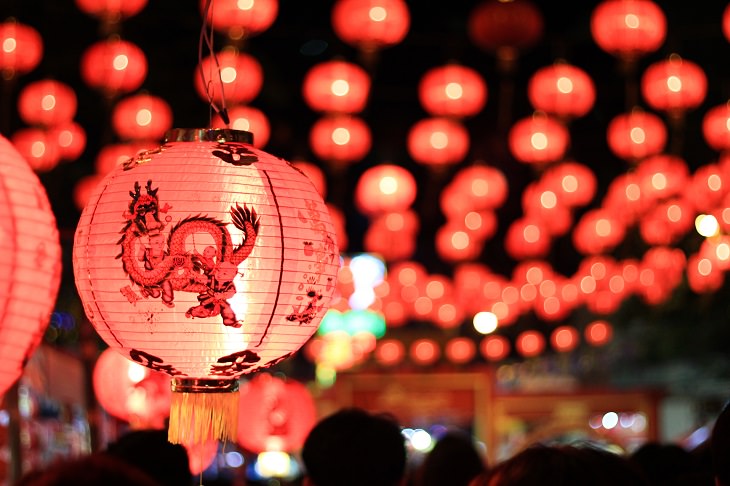
The Chinese language is the only one which entirely relies on this script, and even then, at least two different versions are in active use all over the world; traditional and simplified.
Below is the first sentence of the Wikipedia article on the color orange in hànzì:
橙色,又稱橘色,為二次顏料色,是红色与黄色的混合,得名于橙的颜色。
Note how most of the Chinese characters are very dense and square. Chinese characters are the oldest continuously-used systems of writing in the world, so don’t be surprised if you come across handwritten texts which at first sight don’t resemble the above example.
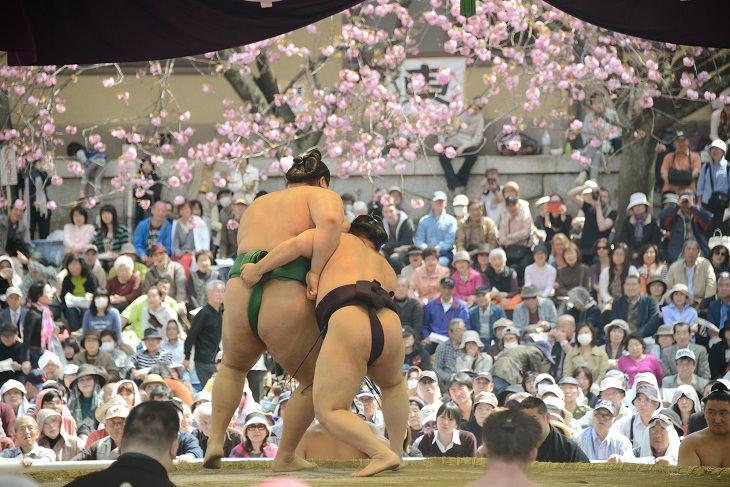
Moving to Japanese, this language has the largest number of official scripts in the world.
Kanji – Chinese characters – are used for most words of Chinese and Japanese origins. Hiragana, the curvy, feminine script, was originally used by women, but it’s now the main building block of the Japanese language – employed for both grammar and vocabulary.
Katakana, the manly, more angular script, is used mainly for loan words, onomatopoeia, and transliteration of foreign words. Finally, romaji, the familiar Latin script used in English and other Western languages, can be found everywhere, from product packaging to company names.
Below is the Wikipedia description of the color orange, employing katakana, kanji, and hiragana, all in the same sentence.
オレンジ色は、果物のオレンジの実のような色。また、夕日に染まる茜雲のような色。
As you can see, due to the use of katakana and hiragana, Japanese is slightly more airy and spacious than Chinese. As a general rule, unlike Chinese and Korean, Japanese also doesn’t use any form of question or exclamation marks, but you might still meet them in some situations.
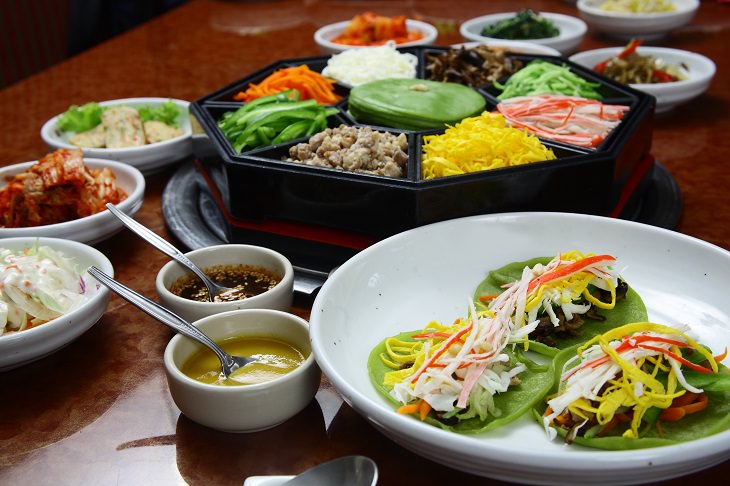
The Korean language, in the mid-15th century, transitioned to hangul – the only script in the world made by an individual, for which the theory and motives behind its creation have been fully set out and explained.
It’s known as one of the most scientific writing systems in the world, and is neither based on ancient written languages, nor an imitation of another set of characters.
In South Korea, you can still meet hanja – Chinese characters – every once in a while, but the script is quickly becoming obsolete.
주황(Orange)은 색 중 하나이다. 이 색은 빨강과 노랑의 중간색이며.
Take note of the many circular shapes used in hangul – these are almost non-existent in the other two languages, thus making the script easy to recognize. Furthermore, unlike Chinese and Japanese, Korean has completely adopted European punctuation marks, from commas to question marks, and space-delimits words and sentences.

Source: lingualift
Images: depositphotos
 20:49
20:49
15 Most Densely Populated Places In the World
Did you know that over 95% of the human population occupies about 10 percent of the land available to us? Here are the 15 most densely populated areas.

17 Poignant Photos That Are Anything But Ordinary
At first glance, you might not understand what's so special about some of these photos, but each one has a backstory that will make it unforgettable.

Wow! This Made Me Want to Visit Japan
If Japan isn't on your travel list yet, it surely will be once you learn these cool facts!
 6:08
6:08
Why Do People In Big Cities Walk FASTER?
It's been proven that people who live in big, densely populated cities tend to walk faster than those who live in smaller towns. The question is why?
 5:49
5:49
Who Are the Americans That Live in North Korea?
Considering North Korea's secrecy and animosity towards the US, it's surprising to learn that 200 Americans live in the Hermit Kingdom... Who are these people?
 12:04
12:04
8 Little-Known Jobs That Keep the Movie Industry Going
We all know actors, directors and screenwriters, but these are the people that take care of the details, without which movies just wouldn't be that good

Where is YOUR Dog From? The Full Dog Breed Compendium
The complete guide to dog races by country!

Don’t Let Broken Zippers Bother You Again. I’ve Found a Fix!
Don’t throw away your favorite pair of pants because of a broken zipper. Grab and needle and thread and try this easy fix.

7 AARP Benefits Every Senior Should Take Advantage Of
Have an AAARP membership? You may not know of these little-known benefits.

Active Stretching: What It Is and How To Do It
Active stretching is a great way to improve flexibility and mobility. Here's how it differs form other forms of stretching and a few useful examples.

Keep Your Oven Clean with This All-Natural Cleaner
This non-toxic all-natural oven cleaner will keep your oven looking spick and span.
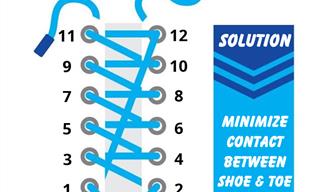
Four Ways to Tie Your Shoes for Foot Pain Relief
This helpful guide will teach you how to tie your laces based on the specific issue you're experiencing.

These 2 Solutions Will Help You Say Goodbye to Plaque!
If you have some plaque on your teeth that you need to get rid of, we recommend that you try out this brilliant home remedy!

Know the Signs: The Complete Guide to Body Language!
You can learn a lot about a person’s intent by reading his body language, so find out just what that wink meant with this helpful guide.
 5:20
5:20
Exploring the Fascinating History of Popcorn!
exploring the history and evolution of this irresistible snack - popcorn!
 9:41
9:41
8 Natural And Safe Ways to Keep Ants Away From Your House
Take note of these useful natural remedies that can help you keep ants away from your home.

14 Ingenious Organization Hacks to Declutter Your Closet
Here are 14 incredibly clever and easy tips and tricks everyone can master to organize your closet and make it a lot more spacious.

Book Recommendations: 10 of the Best Reads for Dog Lovers
If your best friend is a dog, then you’ll this list of the best book about dogs.

Keep the Bedroom Cool in the Summer Heat with These Tips!
Getting a good night's sleep during the hottest summer months doesn't have to be a challenge. With these clever easy tricks, you'll sleep like a baby!

These 3 Healthy Salads Are So Good for Your Eyesight
Did you know that salads are so healthy that they are even good for your eyesight? Try these 3, and you'll SEE what I mean.
 13:12
13:12
39 Smart Cleaning Tips You Just Have to Try
You can never know enough about cleaning. In This Video you can finds 39 great cleaning tips to make your life much simpler.

Guide: 10 Stunning Hairdos You Can Do Yourself at Home
These simple yet impressive hairstyles will leave you feeling confident and stylish for any occasion.

9 Uncommon Ways to Use Oatmeal in Your Home
Oats are so useful outside the kitchen too!

Who Knew Mustard Had So Many Helpful Uses?
10 uses you may have never known you can put mustard to.
 14:12
14:12
Learn to Replace a Bathroom Faucet: Step by Step Tutorial
after watching this step by step video tutorial, you’ll know how to replace a bathroom faucet like a real pro...

9 Ways of Telling Branded Perfume From a Fake
Do you know how to tell a branded perfume from a fake? Well, you're going to be able to after you read these 9 handy tips.

Why You Shouldn’t Use Olive Oil To Fry Or Braise Food
Stovetop cooking is very versatile, but most people are disappointed with this cooking method because they make one of these 10 mistakes...

Everything You Wanted to Know About Coffee...
Is coffee healthy? Is it addictive? Is there any way to reuse coffee grounds? Find the answer these question in this coffee themed collection

11 Things Bleach Can Do For You. #5 is Especially Helpful!
If you think that bleach is only good for bleaching - think again! This stuff is more helpful than you think.

7 Easy, Low-Carb and Guilt-Free Pasta Recipes
Pasta is one of the most popular dishes in the world, and rightfully so – it’s easy to make, delicious, and the sauce options are numerous. Enjoy these 7 recipes that will make your cuisine dreams a reality.

These Remedies That Get Rid of Facial Hair Actually Work
Got excess facial hair? Here are 7 natural remedies to remove it.

More Seniors Should Wear Smartwatches, Here's Why
Smartwatches aren’t just for fitness enthusiasts; it can make for the perfect gift for seniors. Here’s why…

7 Ways Lemons Can Make Your Life a Whole Lot Easier!
Here you'll discover seven surprising ways how you can use lemons and lemon juice to make your life cleaner and easier.

WD-40: Here Are 12 Fantastic Uses You Never Thought Of
This is why you always need to keep a can of WD-40 on your property!

Get Rid of Your Dog's Worms Using These 10 Home Remedies
At some point in their lives, most dogs will suffer from intestinal worms. Should this happen to your dog, here are 10 home remedies to help deworm them.
 18:35
18:35
Cowboy Cures: Saddle Up for Immune-Boosting Home Remedies
Watch this video to learn some useful cowboy cures for a healthy life.

14 Fall Plants Perfect for Brightening Up Your Garden
These 14 perennial flowers can be enjoyed long after summer has ended, and just look at how beautiful they are! How will they look in your garden?
 5:36
5:36
How to Make a Candle-Powered Snow Globe
If you're still looking for decoration ideas, this one is a whopper!
 13:29
13:29
A Complete Set of Solutions for Removing Stains!
This stain removal guide will give you 25 excellent tips for removing any kind of stain!
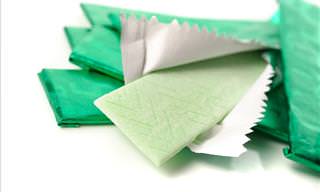
If You Have Gum on Your Clothes, Here's How to Remove It!
It's extremely annoying when you get a piece of chewing gum stuck to your clothes. Thankfully, there are many ways to remove it easily!
 15:13
15:13
Cleaning Guide: The Correct Way to do Daily Chores
We could all do with a couple of life-savers every now and then. Check these out!
 10:58
10:58
If You Love Dogs, Then Avoid Doing These Things With Them
Even though you love your dog, you might be annoying it with some of your habits. Watch to find out more...

Don’t Throw Out These Foods When They Hit The Expiry Date
All 14 of these foods shouldn’t typically be tossed when they reach their expiration date, and you’re about to find out why.
 3:38
3:38
This DIY Food Dispenser Will Transform Your Pet's Life!
A great way to ensure your pet is getting the right amount of food.

How to Revive Your Plants to Shiny Green Again
To help you out, we've put together a comprehensive guide that covers eight signs of plant sickness and provides solutions to restore their health and beauty.

9 Body Language Mistakes You Don’t Even Know You’re Making
most communication between people is through body language, make sure you're not conveying the wrong messages by avoiding the 9 mistakes.

Olive Oil Has so Many Different Uses - Here Are 25 of Them
Olive oil has so many different uses it's unreal. Here are 25 uses of olive oil that you may not have heard of!


